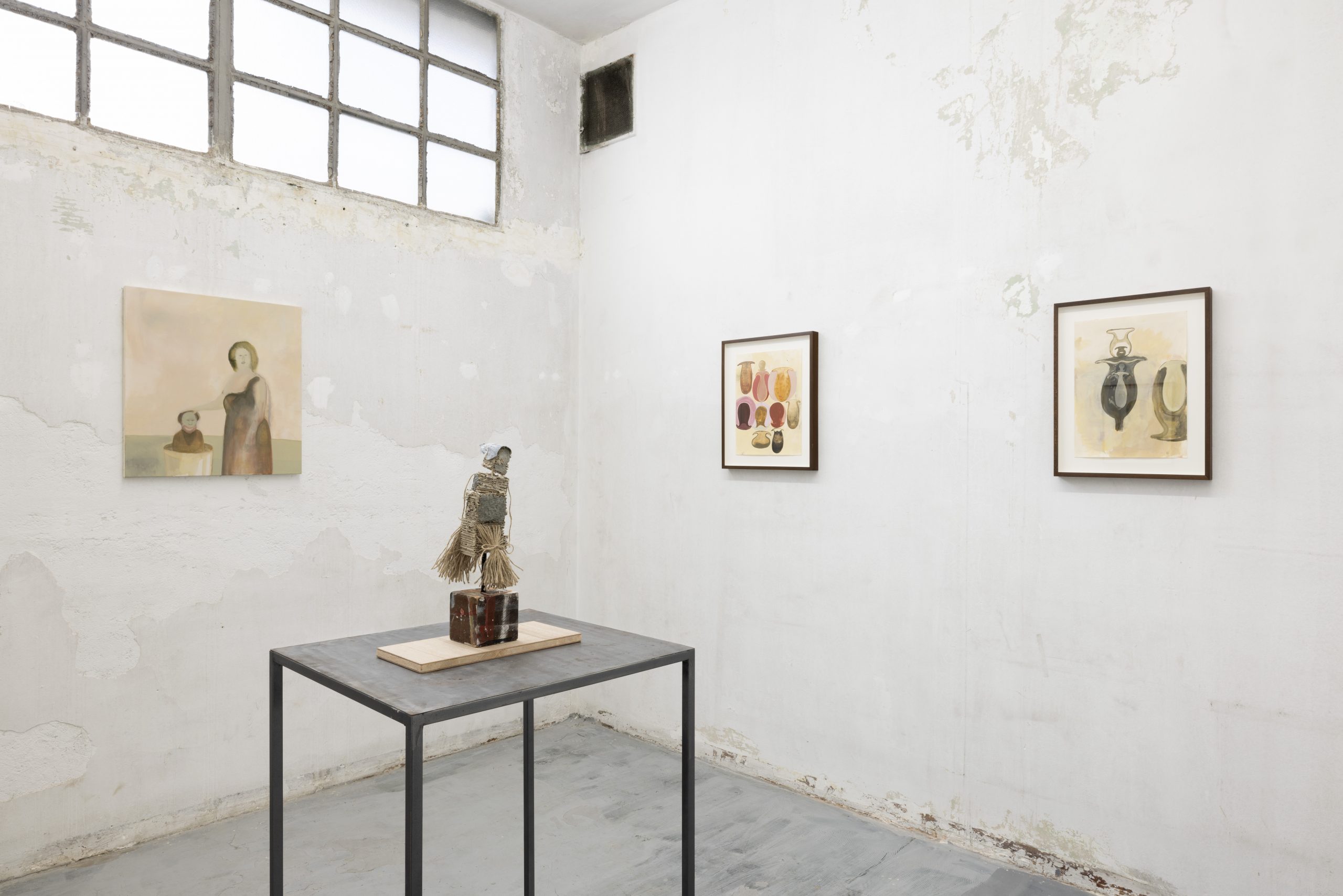
Tomoo Gokita
November 2024
Tomoo Gokita started out as a graphic designer and illustrator, but soon decided to devote himself to art. He draws on comics, films, underground and pornographic magazines to create abstract and surreal compositions. Sometimes described as post-conceptual, Gokita’s work explores the banality of the everyday by placing ordinary subjects in distorted, dreamlike atmospheres.
We met him on the occasion of his solo exhibition ‘Gumbo’, curated by Alberto Salvadori, at the Fondazione ICA in Milan until 30 November, to exchange some thoughts on his new works.
I would like to start with the title of the exhibition: ‘Gumbo’, which is the name of a typical stew from the southern United States. In the text introducing the exhibition you avow: “I have no idea what it means (…) I just painted the things I wanted to paint – my everyday feelings and thoughts.”
Are the titles you have chosen the result of a momentary chance suggestion, or do they also follow synaesthetic intuitions inspired by the works? What is the relationship between word and image for you?
I think I was inspired by the artworks. It’s always fun and painful to come up with a title for an exhibition. I struggled a bit this time too, but when I looked at the finished works, I felt that there was no thematic unity except for the scarecrow series, and that it was like a soup made with various ingredients, so gumbo immediately came to mind and I used it as the title. By the way, I love Dr. John’s masterpiece album “Gumbo,” but it has nothing to do with this exhibition.
There is a certain lack of intention in your artworks: you do not paint to portray someone or something, but just to practise painting; rather than following a narrative, you paint in search of surprise, accepting unexpected events and mistakes, as you say, ‘failure breeds success’. That is why you deform features and disfigure faces, so that cubist distortions and surreal settings create disturbing portraits like in Onsen Therapy, restless still lifes like the Scarecrows series, and dreamlike abstractions. What kind of relationship do you have with your subjects? You seem to be more concerned with their visual strength and presence on the canvas rather than with their forms.
Visual strength is one of the important elements. I lack the ability to think of stories, so I often create works that are superficial, have no deep meaning, and are attracted to jokelike images. Anyway, I would be extremely happy if the best idea I had in my head turned into a work as planned, but I think the fact that it doesn’t always happen is what makes creation interesting and the best part. When it doesn’t go well, I get frustrated, regretful, and give up. I always think that it’s at those times that the essence of creativity lies.
Subtraction, aggregation, condensation, exaggeration, these are the ways in which you transform the images you paint. Your figures seem undefined and yet always have a certain psychological tension, something is happening in these paintings. This is where the connection with music comes in, its immaterial and indefinite nature, which nevertheless has a profound psychological effect on us. How does music enter your practice? How does it influence you?
Music is the best. I might like it more than painting. I have never cried at the sight of a material painting, but I have cried countless times listening to immaterial music. I think there is some secret there. However, I generally don’t listen to music while I am creating a painting. My consciousness is taken away by the music and my hands stop moving. Listening to music after I finish creating is my personal bliss.
You say that you were exposed to elements of Western culture from an early age, from jazz music to Playboy magazine, and indeed improvisation and themes such as pin-up girls entered your painting very early on. Conversely, how much, if anything, is Japan in your approach to painting, in terms of the themes, techniques or subjects you use?
I think YMO and Takashi Murakami are successful in strategically taking advantage of the image of Japan seen from the West, but I have no such concept at all. I am Japanese, but I tend to be very careful about including Japanese elements in my work. I feel a strong sense of discomfort when I go to an art gallery reception wearing a kimono.
PHOTO CREDITS
Installation view Gumbo, Tomoo Gokita, Fondazione ICA Milano
Installation view Gumbo, Tomoo Gokita, Fondazione ICA Milano
Tomoo Gokita, Onsen Therapy, 2024, acrylic on canvas
Tomoo Gokita, Spy, 2024, acrylic on canvas
Installation view Gumbo, Tomoo Gokita, Fondazione ICA Milano
Ph. Andrea Rossetti – Courtesy Fondazione ICA Milano






























